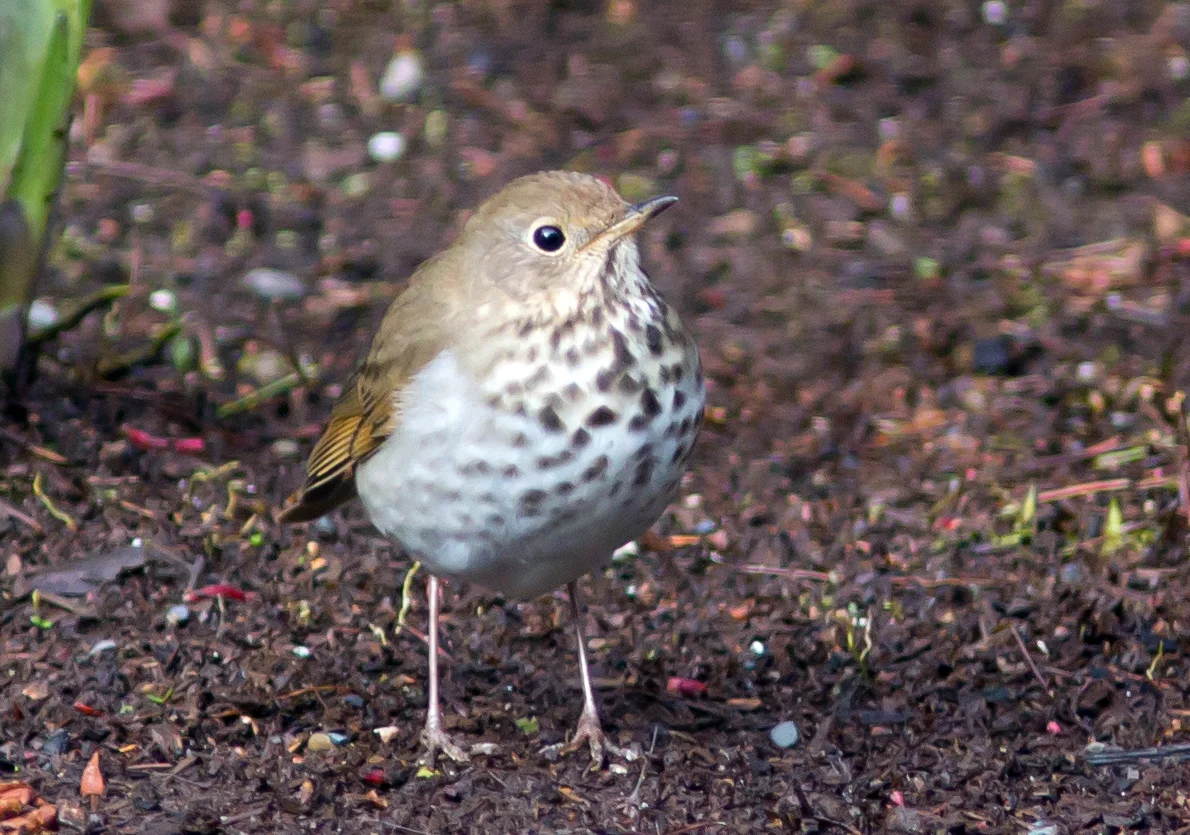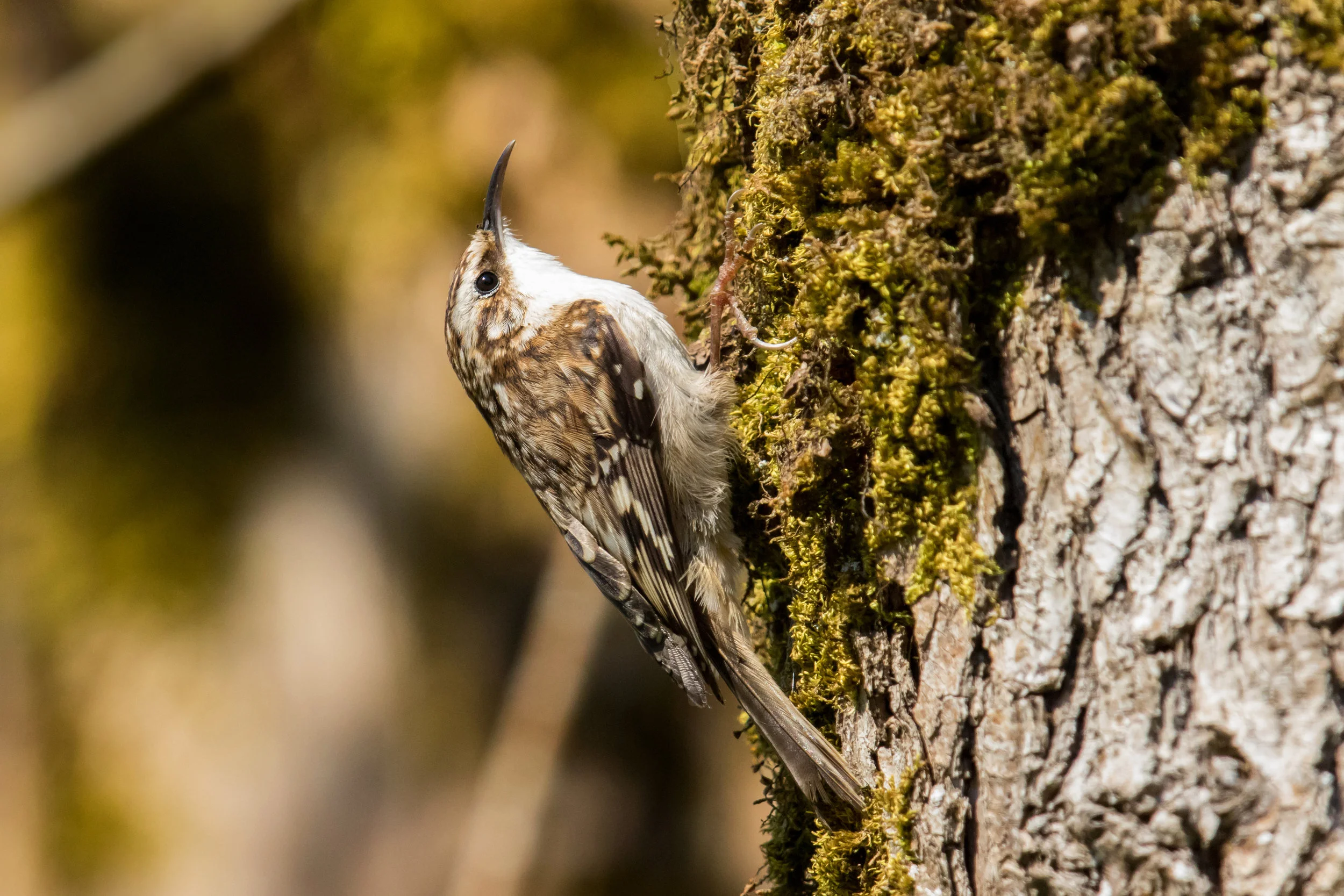Like some little mountain spring … this little wren’s song bubbles, ripples, cascades in a miniature torrent of ecstasy (Blanchan 1903).
Winter Wren
Marsh Wren
Bushtit
Mountain Bluebird
The Mountain Bluebird, sometimes called the “prairie bluebird” (Dunne), is a bird of open grasslands. It is seen most frequently in Central and Eastern Washington. It enjoys a wide range of habitats including an altitudinal range from grasslands to open areas in forests, to alpine tundra (Alderfer).
Chestnut-backed Chickadee
Red-eyed Vireo
The Red-eyed Vireo (REVI) is about 6” long with a wingspan of 10”. The genus name Vireo (VIH-ree-oh) is from Latin vireo, a kind of bird; according to some , the green finch; virere, to be green. The species name olivaceus (ol-ih-VAY-see-us) is Latin, olive-colored; green obscured with neutral tint.
Hutton's Vireo
Warbling Vireo
The Warbling Vireo (WAVI) is about 5.5” long. Its genus Vireo is from Latin meaning ‘a kind of bird.’ The species name is also Latin for ‘pale yellow’. It is the grayest and palest of our vireos with no wing bars, with the only head marking being an indistinct stripe over the eyes. It has a whitish breast which sometimes has a yellowish wash.
Hermit Thrush
Swainson's Thrush
Brown Creeper
The Brown Creeper (BRCR) is about 5 - 5-1/2" long and is camouflaged with brown streaked plumage above and dull white below. It has a relatively long downcurved bill and long, pointed tail feathers. Creepers spiral upward from the base to the branches of a tree, then will fly to a lower place on another tree, probing bark for insects and larvae.
Black-Capped Chickadee
American Robin
Cheerily cheery cheerily cheery. Cheerily cheer-up cheerily cheerio. The morning song of the Robin is our avian alarm clock that begins just before dawn. Now that we may be leaving our windows open a bit at night we become more aware of our neighborhood robin which typically sings from the same perch every morning.




















